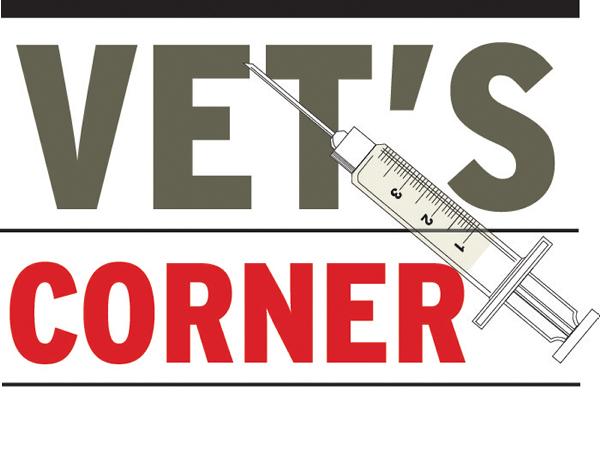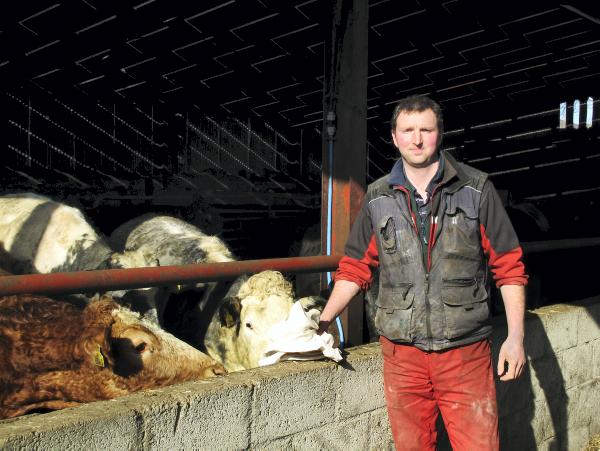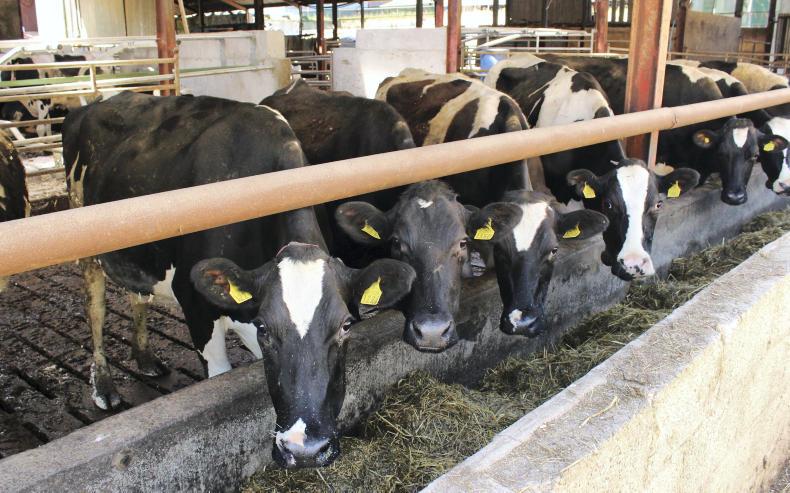This week, we feature part one of a winter management summary on the eight programme farms.
Derek Dunn, Donemana
A silage budget was carried out in October and supplies are on target. First cut is being used in the first half of winter as it is better quality.
It analysed at 32.9% DM, 11.8 ME and 12.3% protein. Most cattle are finishing by mid-January and autumn calvers need high quality feed to get back in calf, so it made more sense to use this first.
This is being reflected in stock performance and meal requirements. Spring calvers were batched at housing according to condition.
Most cows were weaned in a condition score of 3.0 and are being fed 25kg of silage, plus 1kg of straw, along with 100g of dry cow minerals. This is costing £0.65 per day to feed.
Spring cows start calving in March, so from mid-January onwards silage will be built up from 25kg by 1kg per week until calving to support calf growth, at which time cows will be eating to appetite.
Replacement heifers came in last week and are being fed ad-lib silage. Thinner cows had been fed 30kg/day, but have fleshed up well and are now also on 25kg of silage.
Weanling steers and heifers being put back to grass are just over 300kg liveweight and eating 12kg of silage along with 1.75kg barley and 0.25kg soyabean/day. They have gained 0.9kg/day since weaning.
Heavier spring bulls to be finished out of the house are currently on 12kg of silage and 3kg of a 16% protein beef blend. This is being built up to 6kg.
Autumn calvers have been pulled off meal in early December as they were gaining condition and the bulling period is now over.
John Egerton, Roslea
Silage stocks are suffient to carry me until mid-May. Spring calving cows are being fed a restricted diet of first cut silage only at 28kg/day.
The silage is average quality at 23.4% DM, 10.3ME and 10.8% protein. Cows were housed at condition scores 3.0+ and, at this feeding rate, they will lose almost 0.5 of BCS by calving in March.
Silage will gradually be increased eight weeks before calving to support calf growth and prevent a loss of condition score below 2.5.
I do not feed a dry cow or pre-calvers mineral as I have never had any apparent mineral deficiencies.
Weanlings are on ad-lib silage along with a 16% protein blend.
Heifers and steers have been separated with heifers on 1.5kg/day and steers eating almost 2kg, which should support a daily liveweight gain of 0.7kg/day.
The majority of autumn calved cows with calves at foot are now eating ad-lib silage only. This again is average quality with analysis showing 26.3% DM, 10.5ME and 10.2% protein.
They were housed in a condition score of just under 3.0 and have maintained this. A few first calvers that were in slightly poorer condition have been separated for meal feeding until settled in-calf.
Autumn calves have been grazing out during the day so have eaten very little silage so far. They are currently eating 1kg meal/day.
Stephen Maguire, Maguiresbridge
At this stage, I am only 25% of the way through the pit silage and also have a supply of round bales so silage stocks are not an issue.
Nevertheless, I have still been restricting spring calving cows. Silage quality is good and, if fed to appetite, cows would get over-fleshed.
First cut silage is 22.7% DM, 11.6 ME and 12.4% protein and is being rationed at 28kg/day along with 1kg of straw and 100g/day of dry cow minerals. Cows weigh on average 640kg liveweight.
I will increase silage feeding levels closer to calving. The earliest calving cows will not get straight out to grass so I would ideally have them calving in a BCS of 2.75.
Replacement heifers have also been slightly restricted up until now as they were housed in very good condition and are well over target calving weight.
These are now much fitter and will be fed ad-lib silage from now until calving. This silage can theoretically support a gain of 0.9kg/day in weanlings if fed ad-lib.
I fed some meal to weanlings from housing until now, but the strongest replacement heifers were becoming too fleshed, so these are now on silage only.
I have separated the remainder of the calves according to weight. The heaviest are reduced to 1kg/day with lighter calves eating 2kg/day of concentrates.
John Dobson, Waringstown
I have completed a feed budget for all cattle, based on silage analysis, and should have enough fodder to take me through to mid-May.
Silage quality is good as reseeding carried out over the past few years is helping.
First cut analysed at 39.1% DM, 11.2ME and 10.5% protein, while second cut is 24.3%DM, 11.0 ME and 10.5% protein.
Cows are currently being fed second cut silage and being restricted to 28kg/day of silage or 65% of potential cow intake.
When first cut is opened, the higher dry matter means 20kg to 22kg of silage per day will be sufficient.
Cows are fed each morning and have most of the allowance eaten by evening.
They are well settled on this and in ideal condition for this time of year, being fit not fat.
I am adding 1kg of straw to the diet as I have had some dwarf calves in previous years.
Adding some roughage, especially with good quality silage, can help to prevent this. Some research by the SAC also found manganese to play a role in prevention.
I have asked my mineral supplier to increase manganese levels above 7,000mg/kg and I feed 100g of dry cow minerals/day.
Weanlings are presently eating second cut silage along with 1kg of barley and 0.5kg of a 50:50 soya bean and maize distillers mix.
Finishing bullocks are eating 16kg of second cut silage, 7kg barley and 1kg of the soy/distillers mix. This is a cost of £1.90/day and they are currently achieving a weight gain of 1.4kg/day, which is a cost of £1.35/kg of gain.










SHARING OPTIONS